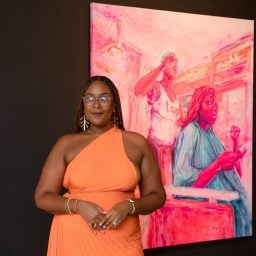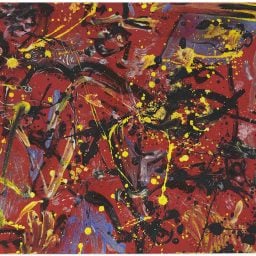In February, a painting by Ghanaian artist Amoako Boafo sold at Phillips in London for $881,432—more than 10 times its estimate and more than 3,000 percent what the seller had paid for it less than a year earlier.
As usual, the artist did not see a penny from the transaction. And this kind of glaring secondary-market spotlight can be harmful for an emerging talent who hasn’t had time to mature or experiment. In other words, auction houses are not usually friendly places for creators—particularly sought-after emerging ones.
Nevertheless, 22 emerging and mid-career Black artists signed up to participate in “Say It Loud (I’m Black and Proud),” an online selling exhibition at Christie’s that opened on July 31 and is dedicated to the promotion of Black art. The auction house, along with the show’s curator, Destinee Ross-Sutton, say they have gone above and beyond to prevent buyers from flipping the works later for a profit.
Each artist will receive 100 percent of the proceeds from the sale of their work. All buyers must also sign a contract with extensive conditions. They must agree not to resell the work at auction for at least five years; if they do want to sell, they must give the artist right of first refusal; and, if they sell to someone else, they have to give 15 percent of the upside back to the artists.
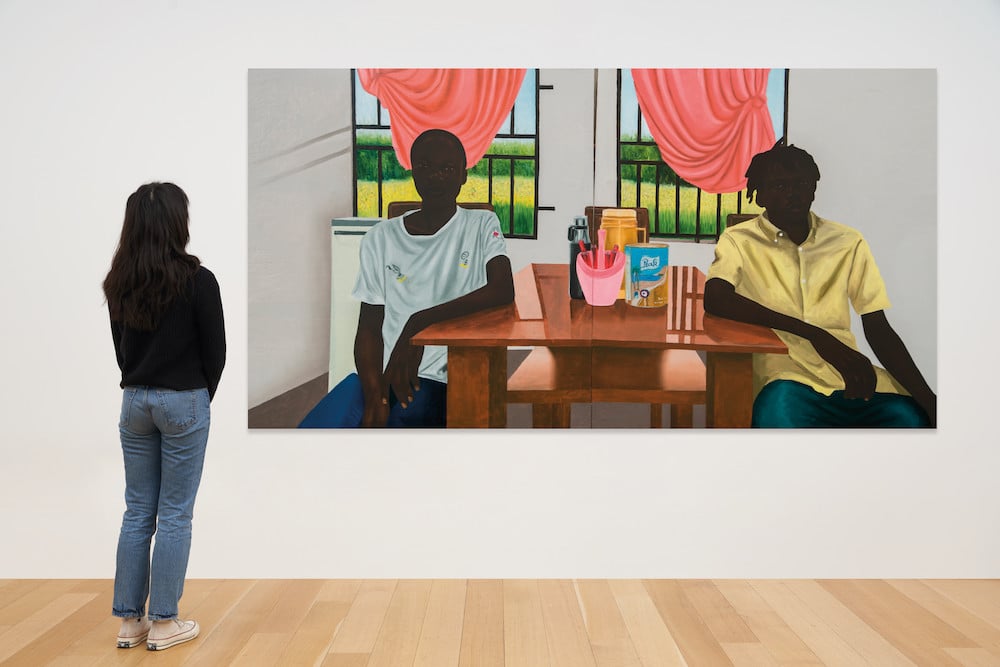
Eniwaye Oluwaseyi, The Breakfast (2020). Image courtesy the artist and Destinee Ross-Sutton 2020
Ross-Sutton says these terms are the result of extensive conversations with artists and others about how best to support their career development. The contract also serves as what she calls “a litmus test” for the motivations of the buyer. Although she had her doubts about how people would respond to the limitations, she says, “it’s basically been a feeding frenzy. It’s encouraging that people aren’t going radio silent when you send the agreement.”
To date, around 75 to 80 percent of the exhibition has sold to collectors and some institutions, with prices ranging from $475 for a limited-edition print by Houston artist Cary Fagan to $43,000 each for two large works by celebrated South African artist Nelson Makamo.
Works by Collins Obijiaku, Khari Turner, Isshaq Ismail, Juwon Aderemi, Alexis McGrigg, Amani Lewis, and Eniwaye Oluwaseyi are priced around $6,000 to $8,000. Work by the Los Angeles-based painter YoYo Lander is priced at $15,000; a large example by South African artist Wonder Buhle Mbambo is $17,000.
Ross-Sutton, a fourth-generation Harlemite, has already earned the nickname “Destinee the Disruptor” among her fans, including a number of the artists in this show. Having watched works by emerging Black artists sell swiftly in recent years—either directly from their studios or through galleries—for modest prices, only to see them get flipped at auction for exponentially higher fees, she wanted to do what she could to put the brakes on the trend.
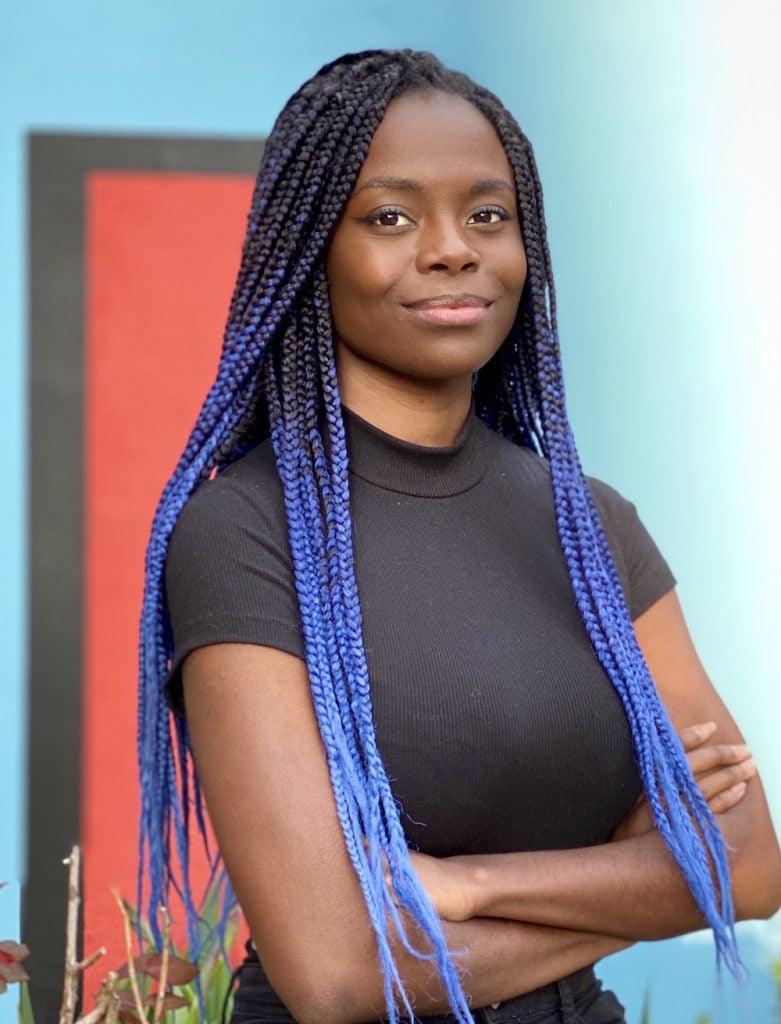
Destinee Ross-Sutton. Image courtesy Destinee Ross-Sutton
The curator was initially skeptical that such a goal could be accomplished inside an auction house. “A large part of these flippers are focused on Black contemporary artists and when [Christie’s junior specialist] Celine Cunha reached out, it was around the time the protests were at their height and I was feeling emotional,” she says. “I really wanted to know, ‘What’s the motive here?'”
As co-chairman of the employee initiatives group under Christie’s corporate social responsibility division, Cunha says her goal was “to provide a platform to amplify artists’ voices, using the Christie’s space and global reach to give back directly to the artistic community.”
The project also has the benefit of giving Christie’s access to collectors it might not have met otherwise, and insight into their preferences and holdings. “We’re excited to cater to this emerging clientele as well as develop programs that specifically cater to collectors of color,” Cunha adds.
As part of the show, Christie’s presented a series of online events curated by The Harlem Arts Alliance, including an artist talk, a live vocal performance, and a discussion among art-world leaders about developing new standards for equitable artist engagement.
Ross-Sutton hopes the experience will empower artists to take charge of their careers, including by pushing their gallery representatives to implement similar sales restrictions. “Many artists do not realize the power they have,” she says. “We cannot only put the blame on these so-called ‘flippers’—artists have to be more discerning and so do galleries. If we enable this kind of behavior by not putting into place certain preventive measures, we have to take some of the blame.”
Most of the time, she says, it’s the same names over and over again that show up in artists’ Instagram messages, asking to be sent a list of available works. Several of them also got in contact with Christie’s, but demurred when they were told they needed to reach out to Ross-Sutton instead. “I think it’s pretty obvious that they surely have a very self-serving agenda that drives them,” Ross-Sutton says, “rather than a love of art.”
“Say It Loud (Black and Proud)” at Christie’s is on view online through August 18. See more works from the show below.
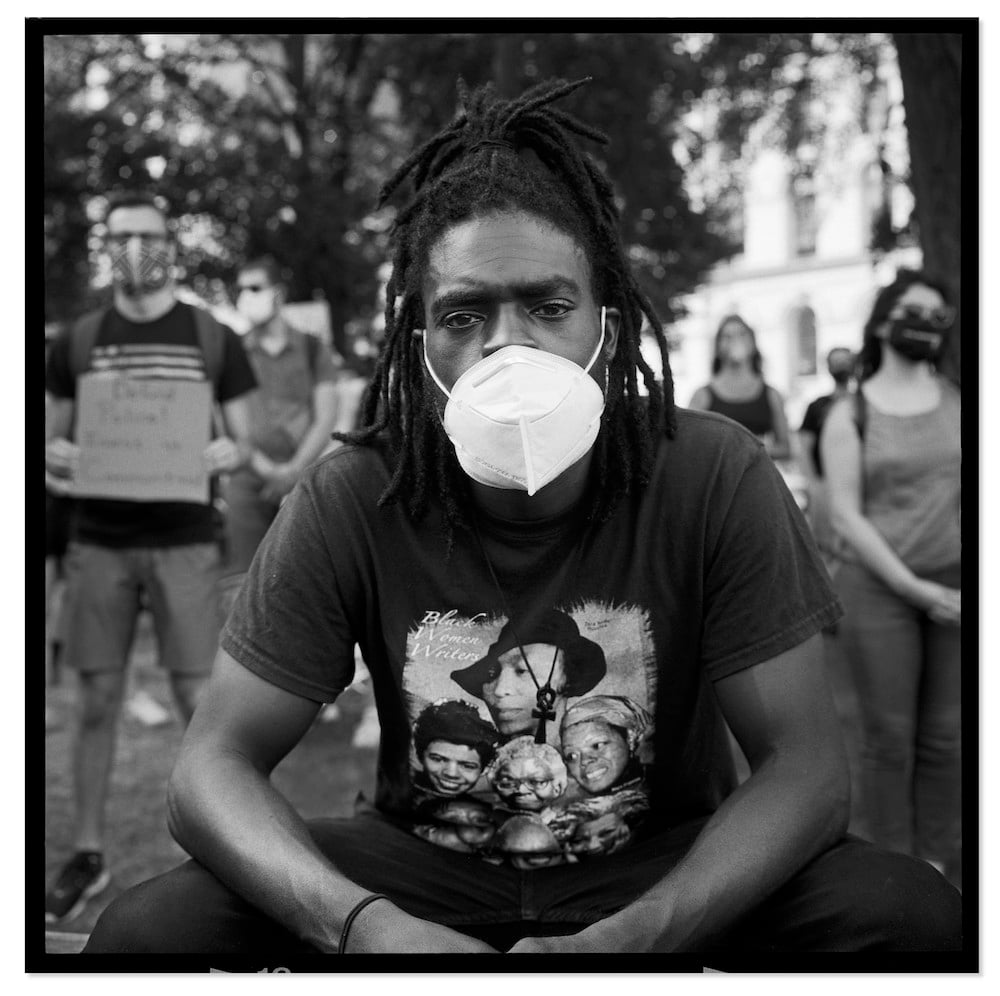
Accra Shepp, Tuesday June 23, 2020, Protester, Defund the Police Rally, City Hall (2020). Image courtesy the artist and Destinee Ross-Sutton 2020
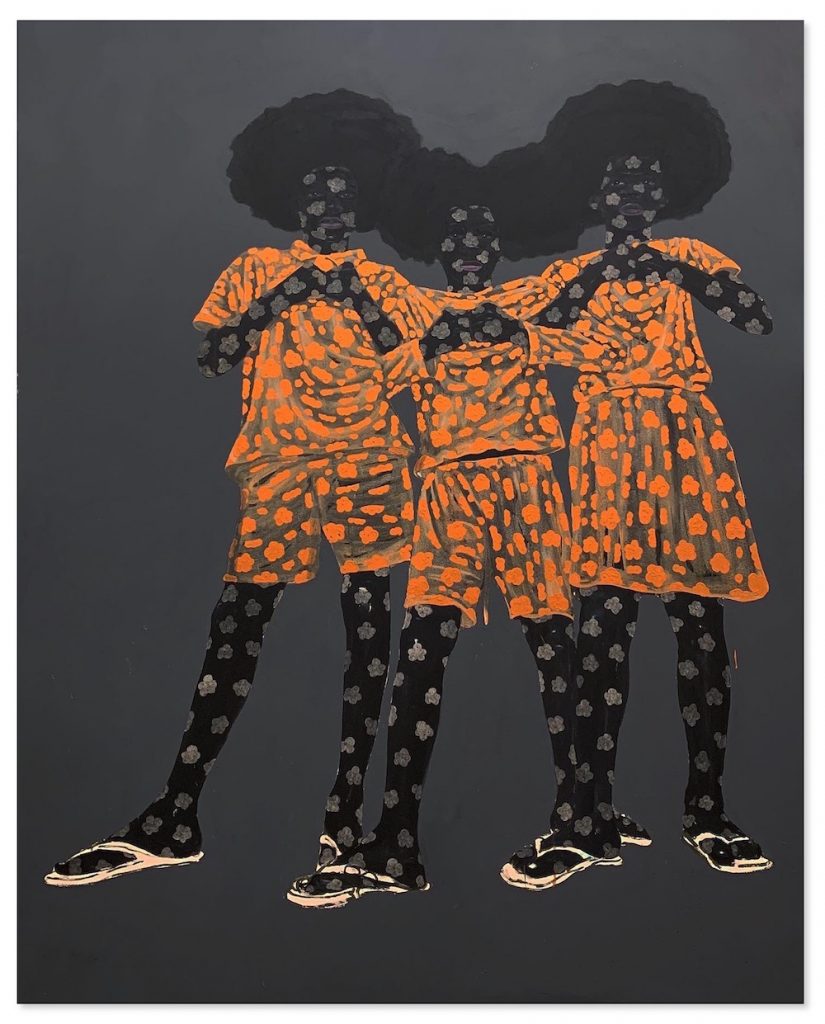
Wonder Buhle Mbambo, Ubuntu buyakha (2020). Image courtesy the artist and Destinee Ross-Sutton 2020
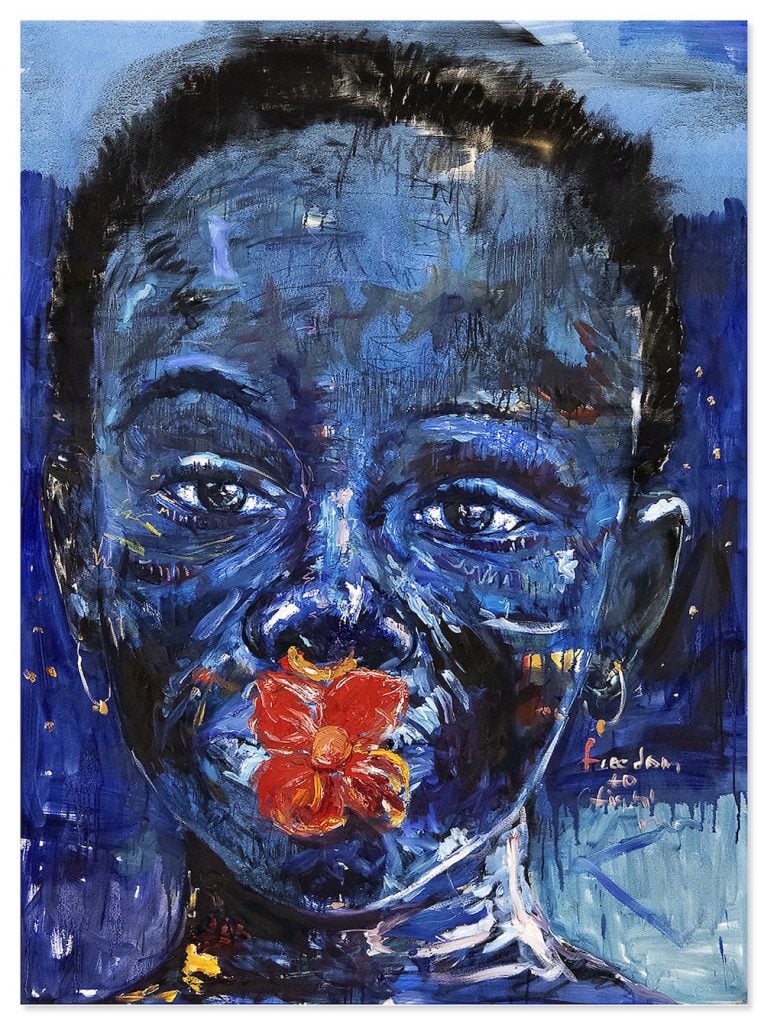
Nelson Makamo, Untitled from “Blue Series” (2020). Image, courtesy the artist and Destinee Ross-Sutton 2020








